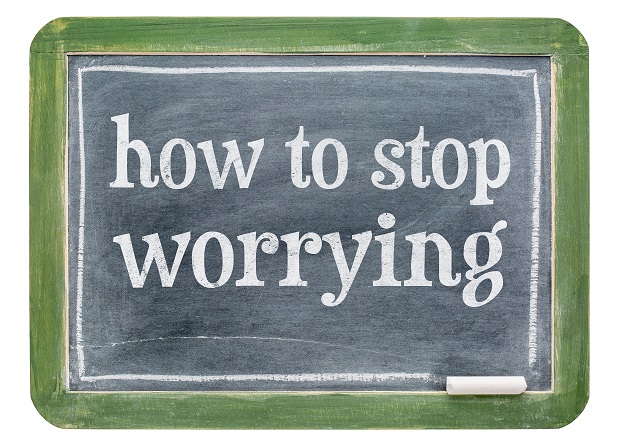
Sharon was a worrier. During most of her waking hours, her mind raced with thoughts of what could go wrong at work or with her kids. She was often restless and on edge, not knowing how to slow down long enough to relax. Lately, this constant tension seemed to spill into every area of her life: she was snapping at her husband, kids, and friends; she couldn’t concentrate at work; and her sex life was practically nonexistent. Sharon’s worry and tension began to take a toll on her body as well. Her stomach was always tied up in knots, her upper back and shoulders ached from constant muscle tension, and she seemed to catch a cold or the flu every time a new bug was going around the office or her children’s school. Sharon considered herself lucky if she got even four hours of sleep at night. Most nights she would lie awake in bed for hours before falling asleep, ironically worrying about the fact that she wasn’t sleeping!
Eventually, Sharon began to worry about all of this too. She worried about the fact that she worried so much, wondering where this was all heading. How can I continue to live this way? she thought. What if I’m wearing myself down and missing out on the best years of my life? Sharon felt ashamed and embarrassed by her worry. She also felt helpless, not knowing what else to do. It was as if worry was a dark cloud following her around wherever she went: What if I don’t finish this project by four o’clock? How will I be able to leave work on time to pick up the kids? I’m so exhausted. How am I going to get through another day without any sleep? And what if I get sick again? I can’t afford any more time off from work.
If Sharon’s story sounds at all familiar, you are not alone. Many women struggle with worry and anxiety over the course of their lives. And many of them overcome it, learning how to keep anxious thoughts and feelings from invading and running their lives. Perhaps Sharon’s story sounds different from or more extreme than the worry you experience. Or maybe worry affects your life in some other way. If so, don’t lose hope—this book is for any woman who worries more than she thinks she needs to, regardless of what the worry is about or how many symptoms she experiences.
WHAT IS WORRY?
Although we all know what worry is firsthand, it can be a bit tricky to define. How can you tell when you’re worrying as opposed to simply thinking about something? Most people consider it worry when they’re thinking negatively or pessimistically about an upcoming situation or when they’re second-guessing themselves about something that has already happened. When people worry, they are usually questioning, What if something goes wrong, or has already gone wrong, and I can’t cope with it? If they keep asking themselves these questions without resolution, they become more and more anxious. For this reason, worry is usually considered to be the thinking component of anxiety. It’s what you are saying to yourself when you’re anxious, usually in anticipation of some future outcome or event.
Another benefit of our ability to think ahead is that it allows us to anticipate and solve potential problems even before they occur. In this case, thinking about the future leads to action that provides a specific solution to a specific problem at hand. For example, imagine you arrive at work one morning and your boss tells you you’ll have to work through your lunch hour. But you already have a lunch meeting scheduled with a friend. Realizing that you’ll soon be expected in two different places at once presents you with a very specific problem to be solved.
Once you’ve identified the problem, you can start generating possible solutions, weigh them all out, and then act on the best possible choice. You might decide to resolve the situation by telling your boss you already have plans, or by rescheduling your lunch with your friend. In other words, you can effectively solve a specific problem by thinking ahead a few hours and taking action.
On the other hand, worry quickly results if you try to solve vague problems, try to solve problems without solutions, or try to prevent something from happening that probably never will happen. If no specific problem exists or if there are no specific solutions under your control, the whole process falls apart. Instead of lowering your anxiety or stress level by providing a sense of resolution, thinking ahead has only generated more anxiety. This type of thinking is considered worry.
Problem Solving Worry
– Concrete problem -Vague problem
– Possible solutions – No specific solutions
– Problem resolved after weighing choices – Issue remains unresolved
– Thinking ahead leads to action – Thinking ahead leads to anxiety
AWARENESS EXERCISE: Worry vs. Problem Solving
The goal of this exercise is to distinguish between problem solving and worry:
1. Think of a clear, concrete problem that can easily be solved. For example, say it’s your turn in the carpool to pick up the kids, but you need to go to a doctor’s appointment. Notice how this is a concrete problem that can be solved with a specific course of action.
2. Now think of a worry. Common examples include asking yourself what if you make a wrong decision, fail to achieve something, or disappoint other people. All of these are quite vague. None of them can be resolved with specific solutions and action.
3. Use the lists above to help you make a distinction between problem solving and worry. Over the next couple of days, tune into your thoughts and see if you can tell when you’re worrying and when you’re successfully problem solving. Notice how it feels to solve concrete problems effectively compared to getting caught up with worry.
4. If you notice yourself worrying, ask yourself if there is anything specific you can do right at that moment to handle the situation. This can help you shift into problem-solving mode if there is a specific problem at hand that is under your control.
Reprinted with permission: New Harbinger Publications, Inc. copyright © 2005 Holly Hazlett-Stevens, PhD



